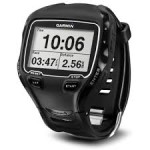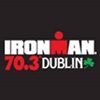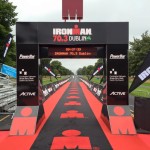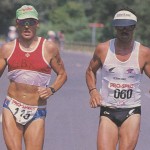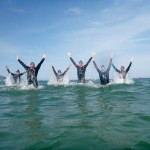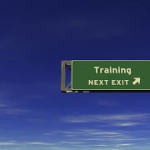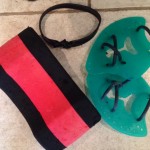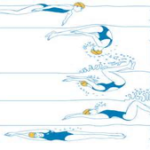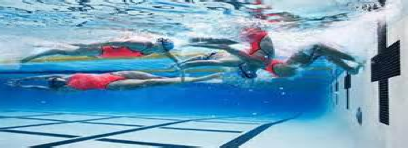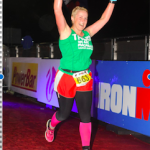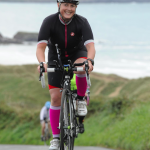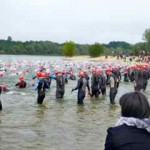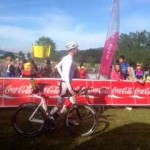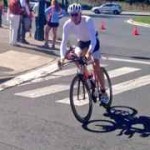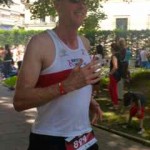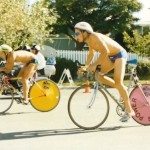 Inspired by a poll my good friend Gary Fegan (@Fegan) carried out - we asked a wide range of Professional Triathletes, Coaches, Nutritionists and Scientists: "In this world of differing diets, Paleo etc, what would you advise for working age group triathletes?"
Many, many thanks to those that took the time to responded below, it truly demonstrates the fortunate contact we have to and with the professional triathlon community.
Inspired by a poll my good friend Gary Fegan (@Fegan) carried out - we asked a wide range of Professional Triathletes, Coaches, Nutritionists and Scientists: "In this world of differing diets, Paleo etc, what would you advise for working age group triathletes?"
Many, many thanks to those that took the time to responded below, it truly demonstrates the fortunate contact we have to and with the professional triathlon community.
Brett Sutton @trisutto
Professional Triathlon Coach, Switzerland/Cozumel
As I tell all my women athletes, old school; meat, vegetables and fruit. For the men, if training hard add the pasta.
Rachel Joyce @rjoyce09
Professional Triathlete, London, England
Everyone's different but the approach I go for is everything fresh and no to processed foods.
Professor Tim Noakes @proftimnoakes
Exercise Science Professor, Cape Town, SA
If heavy and insulin resistant, Paleo would be advisable. Too early to say Paleo will work for all. Each an experiment of one.
Jozsef Major @krepster
Professional Triathlete, Lisbon, Portugal
I seriously follow, believe and recommend @TheCoreDiet. It has its similarities w/ Paleo but it's more "performance driven. Not a paleo fan but everyone has to do that works the best for him/her. Eat 5-6 times/day. Focus on protein, carbs, good fat, less sugar.
Paul Burton @pablo_burt
Age Group Triathlete, London, England
I'm not going paleo/LCHF, but an active move towards a middle ground where I control refined carb intake. Lots more eggs/meat
Early thoughts are that it really helps control energy levels - much More stable, no crashes. Tricky with a sweet tooth though. Must say I'm enjoying embracing eggs & steaks in my diet. Learning to cook properly is fun as well - better than boiling pasta
Belinda Granger @belinda_granger
Professional Triathlete, Noosa, Aus
I still live by the good old fashioned 'everything in moderation'. I eat gluten,meat, dairy, vege, chocolate, red wine, coffee
I make sure I eat it all in moderation and cut down on the 'naughty stuff' when I need to...life is too short to miss out
Dr Philip Skiba @drphilipskiba
Programme Director of Sports Medicine, Chicago, USA
Eat a well balanced diet. Fad diets are for celebrities with more money than sense.
Daniel Hawksworth @hawky1
Professional Triathlete, Jersey, Channel Islands
I enjoy my food but eat healthy at the same time. Body needs fuel. Not in to dieting. If you are too heavy train harder.
Catherine Faux @catherinefaux
Age Group Triathlete, Sheffield, England
Keep it natural and unprocessed. If your granny would be perplexed (pot noodle?) then steer clear. And no 'never' foods.
It's a good rule of thumb. My granny introduced me to slow cooker: perfect for hot tasty goodness after long cold ride. Genius!
Caroline Steffen @caroline_xena
Professional Triathlete, Mooloolaba QLD / Spiez BE
Eat 'clean' food only. No processed products! If the list of ingredients on the backside is longer than 3words, stay away of it
Charlie Pennington @c_e_pennington
Age Group Triathlete, Surrey, England
I'm unusual (!) in that i don't get to control what I get offered to eat (limited choice in Mess): either I eat it or not. therefore I try to be sensible: I eat in moderation but don't particularly forego anything if I want it. I guess the key is that I don't want to burden my wife (does most of cooking when I'm home) with a diet. I eat with my kids :)
Richard Evershed @revershed
Age Group Triathlete, Cheltenham, England
Think it's bit of an AGer thing to subscribe to a type diet (paleo etc) Most pros I’ve read about just keep it simple & eat clean
Tom Lowe @tomalowe
Professional Triathlete, Bristol, England
Healthy, balanced, aspects of Paleo I'd adopt but certainly not all. Plenty of fruit & veg, carbs like oats/potatoes, grains.
Dirk Bockel @dirkbockel
Professional Triathlete, Luxembourg
Without knowing athletes history its hard to say. Heathy, organic (meat,eggs,milk) and mostly GF for sure. Low carb. Many colors
Gordo Byrn @gordo_68
Professional Triathlon Coach, Boulder, Co, USA
For performance http://www.endurancecorner.com/Gordo_Byrn/nutrition_performance …
Brandon Marsh @brandonmarshtx
Professional Triathlete, Texas
Fuel the workouts. Eat smart outside of workouts. Stay away from 'diets'.
Paulo Sousa @pstriathlon
Professional Triathlon Coach, San Diego, Ca, USA
Not a fan of the term "diet" and all the baggage that carries. Eat in a balanced way, low on processed high on fresh food.
Victor Del Corral @victordelcorral
Professional Triathlete, Spain
No meat and no sugar added food products. Drink a lot of water!
Alan Couzens @alan_couzens
Professional Triathlon Coach, Boulder, Co, USA
Scale carbs with activity level. 40/30/30 is a good "middle ground" target for a serious AGer (15-20hrs/wk)
Gina Crawford @gina_crawford
Professional Triathlete, NZ
Eat as natural as possible, cut out the processed stuff. Proteins, fats good, but you still need carbs to fuel sessions.
Scott Neyedii @scottneyedii
Professional Triathlete, Aberdeen, Scotland
High protein generally
Darren Smith @coachdaz
Professional Triathlon Coach, Morzine Fr (Sedona & Canberra)
Very balanced approach to nutrients eat real food! More smaller portions spaced thru day don't go overboard on protein-no need
Matt Dixon @purplepatch
Professional Triathlon Coach, San Francisco, USA
Avoid voodoo hype. Keep it simple. Eat real foods. Ensure you fuel following every workout. Frequent and small healthy meals.
Robbie Haywood @robinhaywood
Professional Triathlon Coach, Various Locations
Don't be scared of good fats, eat for long term health - can't train a sick body
Professor Paul Laursen @paulblaursen
Physiology Manager High Performance Sport, North Shore New Zealand
Paleo or LCHF like this: http://greatist.com/health/ultimate-guide-eating-paleo-infographic …, but periodised like this. http://yelling-stop.blogspot.co.nz/2013/12/low-carb-athletes-world-record-ultra.html ….
but need to warn them that at first they will likely feel like this... http://www.runetics.com/index.php/blogmenu/2014posts/82-sugar-killed-the-running-man …
Emily Miazga @emspowercookies
Nutritionist & Coast to Coast Winner, New Zealand
Some ideals of Paleo are good like avoiding processed food. But I advocate whole food plant-based eating, no fad diets.
Meredith Kessler @mbkessler
Professional Triathlete, San Francisco, Ca, USA
Variety, moderation+normalcy=ideal. Eating wholesome + unprocessed foods in your fueling window @ right times - minimal focus on a #!!
Catriona Morrison @cat_morrison
Professional Triathlete, Broxburn, Scotland
Wide & varied, as unprocessed as poss. Prep & freeze for the week ahead. Treats mandatory.
Edith Niederfriniger @ironfrini
Professional Triathlete, Meran, Italy
Lots of vegetables, add more good protein if you are focusing on gaining strength, more carbs for high intense workouts
Chris McDonald @bigsexymcdonald
Professional Triathlete, Austin, Tx, USA
Everything in moderation! Remember EVERYTHING that goes in your mouth is your "diet".
Tyler Butterfield @tybutterfield
Professional Triathlete, Boulder, Co, USA
I tend to go with Healthy Balance Diet. Nothing crazy, just balance little bit everything. Carb, protein, healthy fats, etc.
Justin Daerr @justindaerr
Professional Triathlete, Boulder, Co, USA
Fuel yourself adequately during long training sessions to avoid overeating later.
Emma Davis @emmadavistri
Professional Triathlete, Various locations
My preference is paleo "for athletes". Paleo with some natural starches such as sweet potatoes etc around training when needed
Joe Beer @coachjoebeer
Professional Triathlon Coach, Braunton, Devon, England
One that is "balanced with your goals, budget, personal happiness and outcome realism" (ie.no diet makes a champ)

Happy eating from Neil & Beth at Performance-Edge!
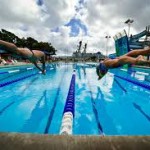 “How do I improve my swim leg for triathlon?” – Also very applicable to Runners!
There are 3 go to tenets that should help you improve and certainly make you more efficient in that triathlon swim leg.
“How do I improve my swim leg for triathlon?” – Also very applicable to Runners!
There are 3 go to tenets that should help you improve and certainly make you more efficient in that triathlon swim leg.

